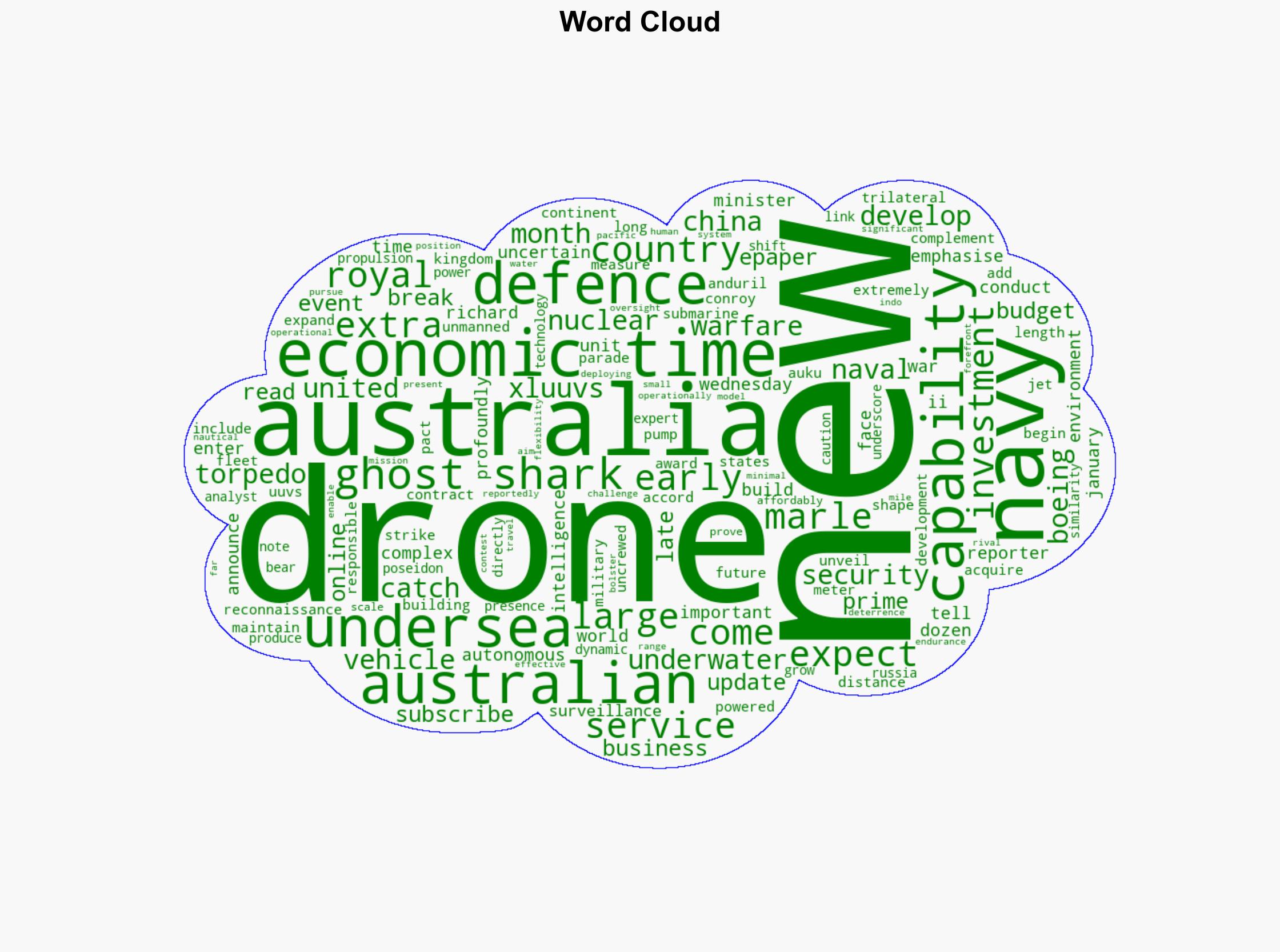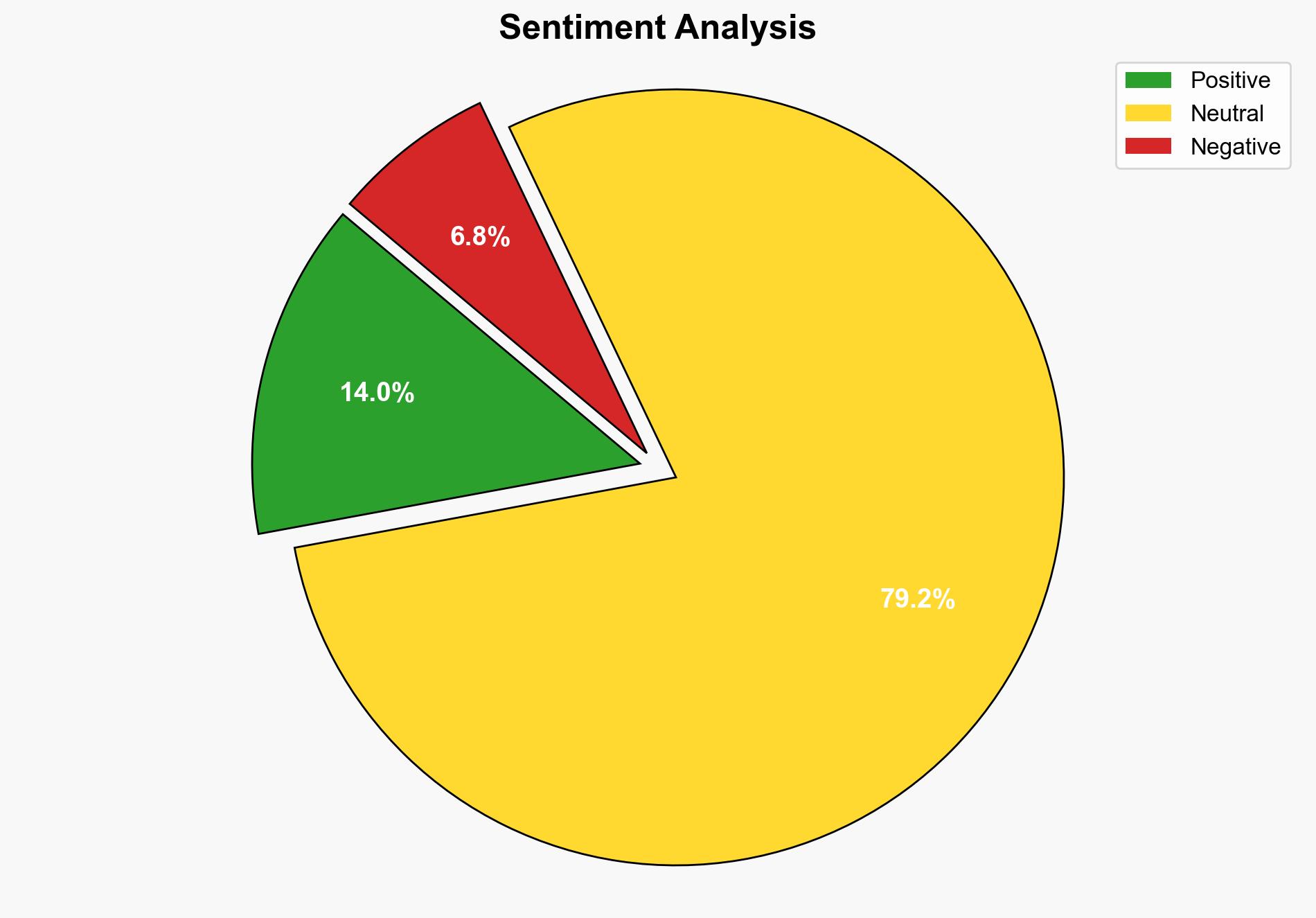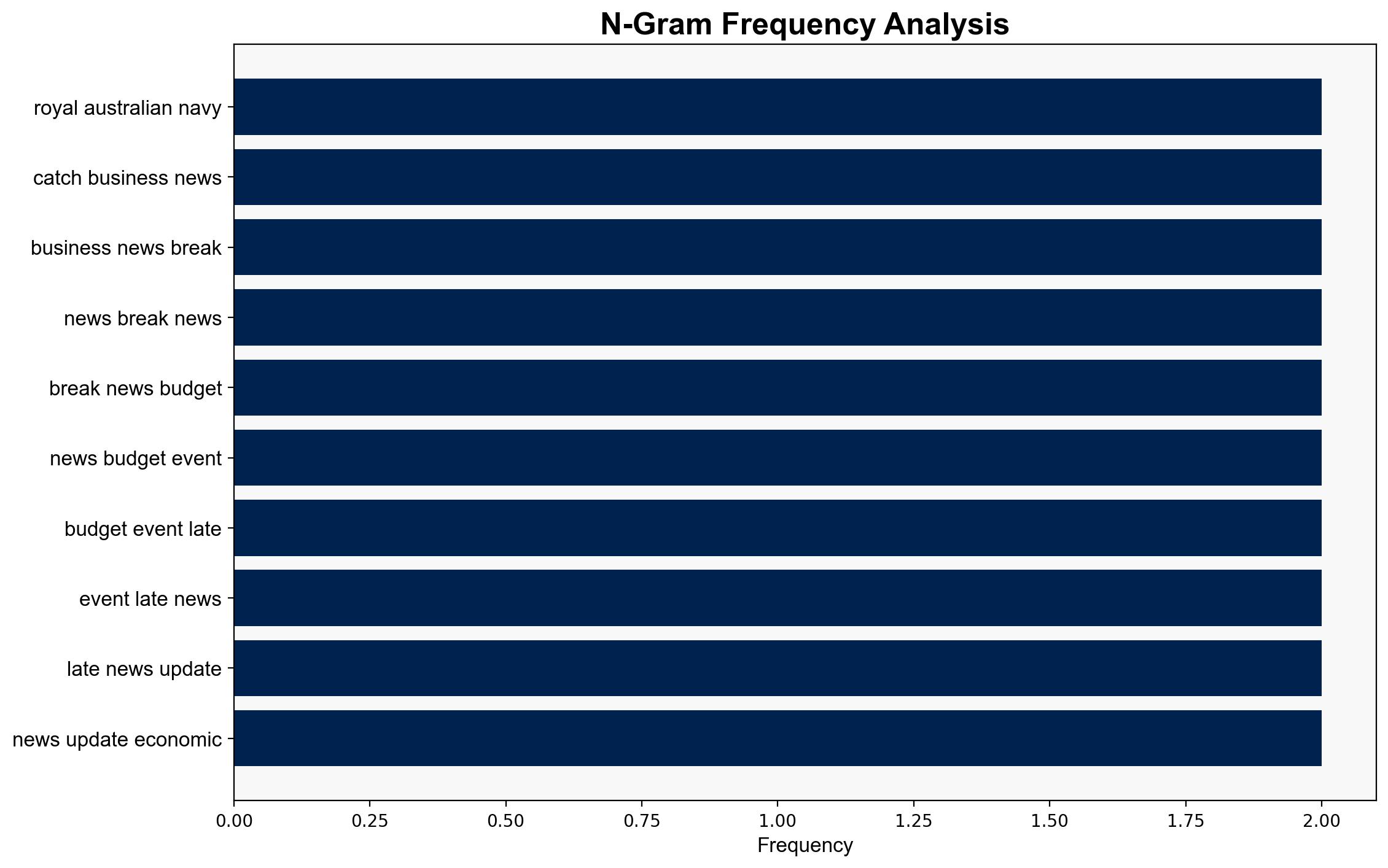Ghost Shark Australia to roll out fleet of underwater attack drones – The Times of India
Published on: 2025-09-10
Intelligence Report: Ghost Shark Australia to roll out fleet of underwater attack drones – The Times of India
1. BLUF (Bottom Line Up Front)
Australia’s development of the Ghost Shark underwater drones represents a strategic enhancement of its naval capabilities, aimed at countering regional threats, particularly from China. The most supported hypothesis is that this initiative is primarily a deterrence strategy in response to increasing regional military activities. Confidence level: Moderate. Recommended action: Monitor further developments in unmanned underwater vehicle (UUV) technologies and regional military responses.
2. Competing Hypotheses
1. **Deterrence and Defense Enhancement Hypothesis**: The primary goal of deploying the Ghost Shark drones is to enhance Australia’s deterrence capabilities and operational flexibility in the Indo-Pacific region, particularly in response to China’s expanding military presence and UUV investments.
2. **Technological Advancement and Economic Strategy Hypothesis**: The initiative is driven by a desire to position Australia as a leader in advanced military technologies, potentially boosting its defense industry and economic standing through innovation and export opportunities.
Using the Analysis of Competing Hypotheses (ACH) 2.0, the deterrence hypothesis is better supported due to the timing of the announcement and the specific mention of regional security challenges. The technological advancement hypothesis, while plausible, lacks direct evidence linking the initiative to economic objectives.
3. Key Assumptions and Red Flags
– **Assumptions**: It is assumed that the Ghost Shark drones will be operationally effective and that regional actors will perceive them as a credible deterrent. Another assumption is that China’s UUV developments directly threaten Australian interests.
– **Red Flags**: The report lacks detailed information on the operational capabilities and limitations of the Ghost Shark drones. There is also potential bias in interpreting China’s military activities as aggressive without clear evidence.
4. Implications and Strategic Risks
The deployment of Ghost Shark drones may escalate regional tensions, particularly with China, potentially leading to an arms race in UUV technologies. Economically, the initiative could strain Australia’s defense budget if costs exceed projections. Geopolitically, it may strengthen alliances with the US and UK but could also provoke adversarial responses from regional powers.
5. Recommendations and Outlook
- Monitor regional military developments and adjust defense strategies accordingly to maintain a balance of power.
- Engage in diplomatic efforts to mitigate potential escalations and foster transparency in military advancements.
- Scenario Projections:
- Best Case: Strengthened deterrence and regional stability with enhanced international defense collaborations.
- Worst Case: Escalation into a regional arms race, increasing tensions and economic burdens.
- Most Likely: Incremental improvements in defense capabilities with cautious regional responses.
6. Key Individuals and Entities
Richard Marles, Anduril Australia, Boeing (involved in similar UUV developments).
7. Thematic Tags
national security threats, cybersecurity, counter-terrorism, regional focus





